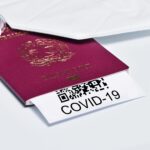Canadian immigration policies are constantly evolving to adapt to the changing needs of the country. One such policy that has gained prominence in recent years is the Authorization to Return to Canada (ARC). In this article, we will discuss in-depth what ARC is, its importance, and the application process.
Table of Contents
- Introduction to Authorization to Return to Canada (ARC)
- Types of Removal Orders in Canadian Immigration
- Eligibility for ARC
- ARC Application Process
- Temporary Resident Visa (TRV) and ARC
- ARC Processing Time and Fees
- Important Points to Remember
1. Introduction to Authorization to Return to Canada (ARC)
Authorization to Return to Canada (ARC) is a document issued by the Canadian government that allows a foreign national who was previously issued a removal order to re-enter the country. Removal orders are given to individuals who have violated Canada’s immigration laws and must leave the country. The purpose of ARC is to ensure that individuals who have been removed from Canada can apply to return under certain conditions.
2. Types of Removal Orders in Canadian Immigration
There are three types of removal orders in Canadian immigration:
2.1. Departure Order
A Departure Order requires a foreign national to leave Canada within 30 days of the order becoming enforceable. Failure to comply with a Departure Order can result in it becoming a Deportation Order.
2.2. Exclusion Order
An Exclusion Order prevents a foreign national from returning to Canada for one year (or two years in the case of misrepresentation). However, if the individual wants to return before the specified period, they must apply for an ARC.
2.3. Deportation Order
A Deportation Order is a more severe removal order that permanently bans an individual from returning to Canada. To re-enter the country, a person with a Deportation Order must obtain an ARC, regardless of the time that has passed since the order was enforced.
3. Eligibility for ARC
A foreign national who has been issued a removal order must meet certain criteria before being eligible to apply for an ARC. These criteria include:
- Sufficient time has passed since the removal order: For an Exclusion Order, a minimum of one year must have passed; for a Deportation Order, there is no specified time, but the applicant must demonstrate that circumstances have changed since the issuance of the order.
- Compliance with the removal order: The applicant must have left Canada as required by the removal order and remained outside of the country during the specified period.
- No criminal or security concerns: The applicant must not pose any threat to Canadian security or public safety.
- Reason for returning: The applicant must provide a valid reason for their return to Canada, such as work, study, or family reunification.
4. ARC Application Process
The application process for an Authorization to Return to Canada involves the following steps:
- Gather necessary documents: Applicants must provide documents that prove their identity, demonstrate compliance with the removal order, and explain the reasons for their return to Canada.
- Complete the application forms: Applicants must complete the required forms, such as IMM 0008 (Generic Application Form for Canada) and IMM 5257 (Application for Temporary Resident Visa).
- Submit the application: The completed application forms and supporting documents must be submitted to the nearest Canadian visa office or online, depending on the applicant’s country of residence.
- Attend an interview: Although rare, in some cases, applicants may be required to attend an interview with a Canadian immigration officer to discuss their application and reasons for returning to Canada.
- Wait for the decision: The processing time for ARC applications varies depending on the complexity of the case and the workload at the visa office. Applicants will be notified of the decision in writing.
5. Temporary Resident Visa (TRV) and ARC
In some cases, a foreign national who requires an ARC may also need a Temporary Resident Visa (TRV) to enter Canada. A TRV is required for citizens of certain countries who wish to visit, study, or work in Canada temporarily.
If an applicant requires both an ARC and a TRV, they must submit both applications together. The same supporting documents can be used for both applications. However, applicants must pay separate processing fees for the ARC and TRV applications.
6. ARC Processing Time and Fees
The processing time for an ARC application depends on the complexity of the case and the workload at the visa office. Generally, processing times range from a few weeks to several months. Applicants should apply for an ARC well in advance of their intended travel date to account for potential processing delays.
The fees for an ARC application are as follows:
- Each applicant: CAD 400
These fees are non-refundable, even if the application is denied, and on top of the ordinary application fee of the visa category sought
7. Important Points to Remember
- An ARC is required for foreign nationals who have been issued a removal order and wish to return to Canada.
- Applicants must demonstrate that they have complied with the removal order and that their circumstances have changed since the issuance of the order.
- The application process involves gathering necessary documents, completing the required forms, and submitting the application to the appropriate visa office.
- In some cases, applicants may also require a Temporary Resident Visa (TRV) to enter Canada.
- Processing times and fees for ARC applications vary depending on the case and visa office.
- It is crucial to apply for an ARC well in advance of the intended travel date and to provide complete and accurate information in the application.
In conclusion, the Authorization to Return to Canada (ARC) plays a vital role in Canadian immigration by allowing individuals who have previously been issued a removal order to return to the country under certain conditions. Understanding the eligibility criteria, application process, and potential processing times can help applicants navigate the complex world of Canadian immigration and successfully re-enter the country.
If you are looking to apply to come back to Canada, let us know and we can help!
The content above is not intended to provide legal advice or opinions of any kind and may not be used for professional or commercial purposes. E&OE.




